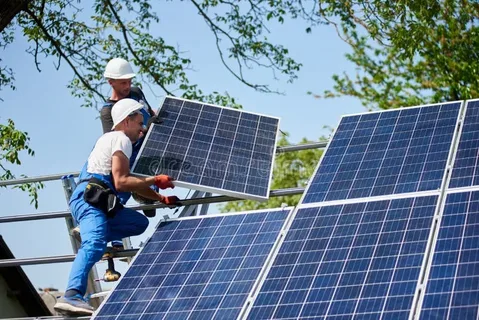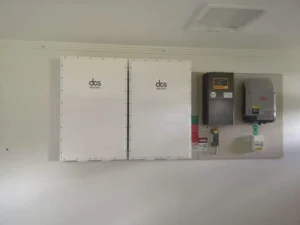Imagine a world where your energy bills shrink while you harness the sun’s power. A Stand Alone Solar Power System could turn that dream into reality. As more households and businesses adopt this technology, its economic impact goes beyond just savings on utility costs; it ripples through communities and local economies. With rising energy prices and increased awareness of climate change, many are looking for sustainable solutions. Stand-alone solar systems offer a path to reduced expenses and an opportunity for job creation, energy independence, and enhanced property values.
Long-Term Savings: How Stand-Alone Systems Reduce Energy Bills
Stand-alone solar power systems offer remarkable long-term savings that can significantly reduce energy bills. Homeowners and businesses generate electricity by tapping into the sun’s energy, cutting reliance on costly utilities. Over time, this translates to substantial savings as monthly bills shrink or disappear.
Moreover, these systems require minimal maintenance once installed. With no moving parts, they tend to operate efficiently for decades with little oversight needed. This reliability means fewer unexpected costs down the road.
Tax incentives and rebates further enhance affordability when installing a stand-alone solar system. Many regions offer financial support that eases upfront expenses while providing ongoing savings through lower energy costs. As technology advances and prices drop, adopting stand-alone solar becomes an increasingly wise investment for those looking to secure their financial future.
The Role of Government Incentives in Solar Adoption
Government incentives, such as tax credits, rebates, and grants, play a crucial role in encouraging the adoption of stand-alone solar power systems. Reducing financial barriers makes solar installations more accessible for homeowners and businesses alike.
In many regions, local government programs aim to promote renewable energy usage by offering financial assistance or streamlined permitting processes. This support helps individuals save money and fosters community engagement in sustainable practices.
Moreover, state and federal policies can significantly influence market trends. As governments commit to clean energy goals, these initiatives create an environment where investments in solar technology thrive. The result is accelerated growth within the industry and increased consumer interest in stand-alone solar solutions.
Job Creation in the Solar Industry: A Growing Sector
The solar industry has emerged as a powerhouse for job creation, significantly outpacing many traditional sectors. As the demand for renewable energy solutions increases, so does the need for skilled workers in the manufacturing, installing, and maintaining stand-alone solar power systems. This growth opens doors to various career paths.
Moreover, jobs in this sector vary widely, from engineering roles to sales positions. The diversity ensures that individuals with different skill sets can find opportunities within the solar landscape. Many companies invest in training programs to develop local talent tailored to their needs.
The ripple effect extends beyond direct employment; it often stimulates related industries such as construction and logistics. Communities benefit by seeing local businesses thrive alongside new job opportunities, fostering an environment ripe for innovation and economic development.
The Impact of Stand Alone Solar Power on Local Economies
Stand Alone Solar Power can significantly boost local economies. By investing in these renewable energy sources, communities reduce their reliance on conventional power grids and the associated costs. This shift often results in lower energy bills for residents and businesses.
Moreover, demand for related products and services grows as more people adopt stand-alone systems. Local installers and maintenance providers benefit from this trend, creating additional revenue streams circulating within the community.
In rural areas, stand-alone solar installations can enhance infrastructure development. Improved access to affordable energy attracts new businesses and encourages existing ones to expand, fostering an environment of growth and sustainability while improving residents’ overall quality of life.
Enhancing Energy Independence: Economic Benefits for Communities
Communities that adopt stand-alone solar power systems significantly enhance their energy independence. By generating their electricity, they reduce reliance on external energy sources. This autonomy leads to greater control over energy costs and stability in pricing.
When local areas harness solar power, money circulates within the community. Residents save on monthly utility bills while investing in local services and businesses. These financial benefits can help stimulate local economies, creating a growth cycle.
Moreover, increased energy independence reduces vulnerability to fluctuations in global markets and political unrest affecting traditional fuel supplies. Communities with stand-alone solar systems are better equipped for resilience against such challenges, ultimately improving economic security for all residents involved.
Understanding the Cost of Stand Alone Solar Panels
Understanding the costs involved is crucial when considering a Stand Alone Solar Panels. The initial investment can be significant, with prices varying based on panel quality and energy needs. On average, homeowners may spend several thousand dollars for a complete setup.
Installation also contributes to overall expenses. Factors such as labor costs and site assessments determine final figures. Additional equipment like batteries or inverters further affects pricing but enhances system efficiency.
However, these upfront costs often lead to substantial savings over time. With lower monthly utility bills and potential government incentives available, many find that their investment pays off within a few years. Technological advances continually drive down production costs, making solar power more accessible.
Solar Power and Real Estate: Effects on Property Values
The integration of stand-alone solar power systems can significantly impact property values. Homes equipped with solar panels often attract buyers looking for energy efficiency and lower utility bills. This shift in demand can lead to higher market prices.
Properties with solar installations are frequently seen as more desirable, leading to quicker sales than those without them. Buyers recognise the long-term savings associated with reduced energy costs, making these homes an attractive investment.
Moreover, local markets may experience a ripple effect from increased interest in renewable energy solutions. As communities embrace sustainability, neighbourhoods featuring stand-alone solar power systems may witness a boost in overall property values, enhancing their appeal and competitiveness in the real estate market.
Reducing Energy Poverty: Solar Solutions for Underserved Areas
Energy poverty affects millions, leaving households without reliable access to electricity. Stand-alone solar power systems offer a lifeline for underserved areas, transforming lives and communities. With no dependency on traditional grids, these systems empower residents with clean energy solutions.
Solar installations can be scaled to fit unique community needs, enabling even the smallest homes or clinics to benefit from sustainable energy. This flexibility is crucial in remote regions where extending conventional power lines isn’t feasible or cost-effective.
Moreover, lower operating costs mean families can redirect their limited resources towards education or health care instead of inflated energy bills. By harnessing the sun’s potential, stand-alone solar systems provide immediate relief and pave the way for long-term economic growth and resilience in these vulnerable populations.
The Influence of Stand Alone Solar Panel System on Energy Prices
Stand Alone Solar Panel System are slowly reshaping energy markets. By generating electricity on-site, these systems reduce reliance on traditional grid power. This shift can decrease demand for fossil fuels and other non-renewable sources, often increasing prices.
As more households invest in stand-alone solar installations, they contribute to a drop in energy prices overall. Increased competition among energy providers encourages innovation and efficiency. Consequently, consumers may benefit from lower bills while promoting cleaner alternatives.
Furthermore, the widespread adoption of renewable energy technologies influences governmental policies and investment strategies. As governments prioritize green initiatives, we might see subsidies or incentives that further stabilize or lower energy costs in the long term. The ripple effect of solar adoption is evident as it challenges conventional pricing structures within the energy market.
Comparing the Economic Impact of Solar vs. Traditional Energy Sources
The economic impact of stand-alone solar power systems significantly contrasts with traditional energy sources. Solar energy has minimal operational costs after installation, allowing households and businesses to enjoy long-term savings. In contrast, fossil fuels often experience volatile price fluctuations that strain budgets.
Moreover, the initial investment in solar technology is decreasing due to advancements and government incentives. Traditional nuclear or coal plants require substantial ongoing maintenance and environmental compliance expenses. These factors contribute to a more stable financial outlook for solar solutions.
Solar power also drives job creation in emerging industries focused on renewable technologies. While traditional energy sectors may provide jobs, they are often tied to outdated models facing declining demand or regulatory hurdles. The shift towards renewable sources signals growth potential that many economies are eager to embrace.
Financing Options for Stand-Alone Solar Systems
Financing a stand-alone solar power system can seem daunting, but there are several accessible options available. Many homeowners turn to solar loans, which allow them to spread the cost over time while enjoying immediate energy savings. With low interest rates and flexible terms, these loans make investing in renewable energy easier.
Another popular choice is leasing. This option lets users install solar panels without upfront costs by paying a monthly fee. The benefits include maintenance coverage and potential savings on electricity bills right from day one.
Government programs often provide grants or rebates to reduce initial expenses, too. These incentives encourage more individuals to adopt clean energy solutions while supporting local economies through increased investment in sustainable technologies.
The Economic Benefits of Small Stand Alone Solar System in Rural Areas
Small Stand Alone Solar System can transform rural areas by providing reliable electricity.
Cost Savings on Energy Bills
Discuss how small stand-alone solar systems can significantly reduce energy costs for rural households by providing a reliable and free source of electricity and lowering dependency on expensive grid power or fuel-based generators.
Job Creation and Local Economic Development
Highlight the potential for job creation in rural areas through installing, maintaining, and operating solar systems, fostering local economic development and providing employment opportunities for community members.
Increased Property Values
Examine how installing solar systems can enhance property values in rural areas, making homes more attractive to buyers interested in energy efficiency and sustainability.
Enhanced Energy Independence and Resilience
Explain how small stand-alone solar systems contribute to energy independence, particularly in remote areas, reducing vulnerability to energy price fluctuations and improving resilience against power outages.
Conclusion
The economic impact of Stand Alone Solar Power System is multifaceted and significant. They offer tangible benefits to individual households, entire communities, and local economies. As more people adopt this technology, the ripple effects can lead to greater sustainability and energy independence. Additionally, as government incentives continue to play a pivotal role in fostering interest in renewable energy, we see increased job opportunities within the solar sector.
FAQs
What are some common misconceptions about Stand Alone Solar Power System?
Many believe they are too expensive or complicated; however, technological advancements have made them more affordable and user-friendly than ever before.
How much can a Stand Alone Solar Power save on my energy bills?
Savings vary based on location and consumption patterns, but many users report 50% or more reductions in their monthly utility costs after installation.
Are there specific tax credits available for installing a stand-alone solar power system?
Yes! Various federal and state incentives exist that can significantly reduce initial installation costs—check local regulations for specifics tailored to your area.




